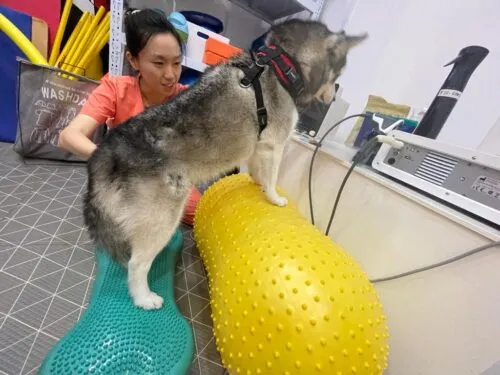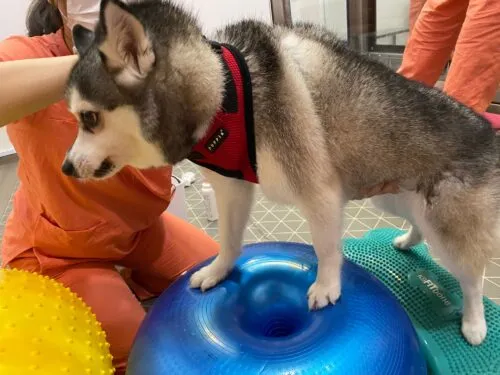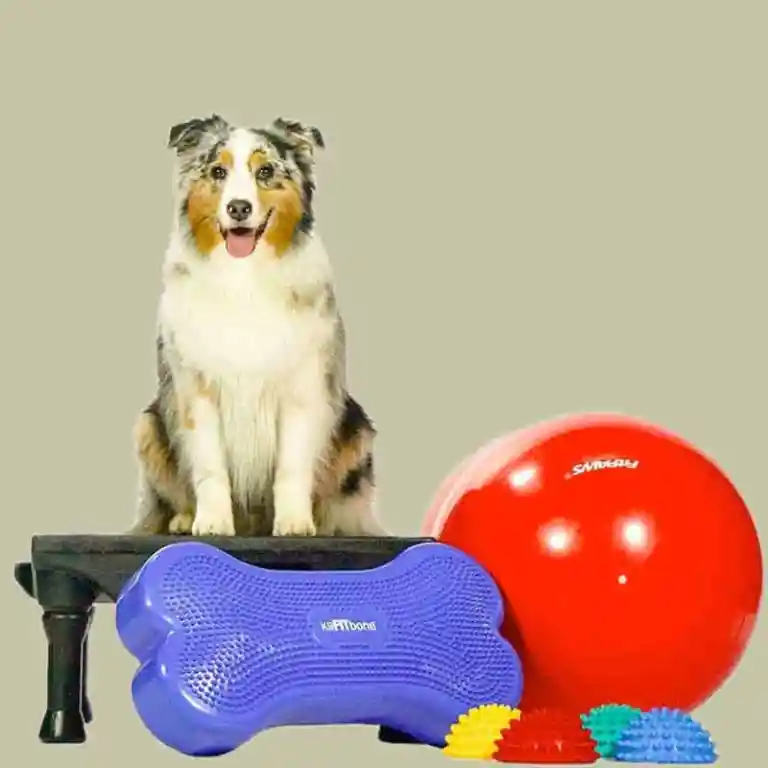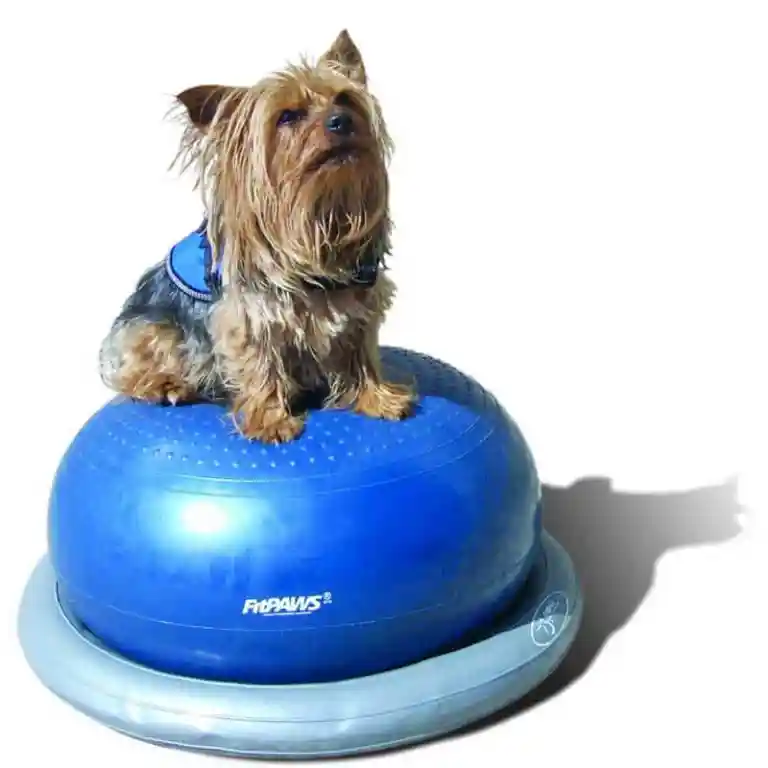Proprioception exercises for dogs and cats are specifically designed activities that aim to improve an animal’s body awareness, balance, and coordination. These exercises are beneficial for pets recovering from injuries, managing chronic conditions, or enhancing overall mobility and fitness. Some key aspects of proprioception exercises include:
At RehabVet Clinic, our experienced team incorporates proprioception exercises into comprehensive rehabilitation programs, ensuring optimal support for your pet’s recovery and overall well-being.


Proprioception exercises offer numerous benefits for dogs and cats experiencing a range of symptoms and conditions. At RehabVet Clinic, our team uses these exercises to address the following issues:
Therapeutic exercise is perhaps one of the most valuable modalities used in canine physical rehabilitation. Some of the common goals of therapeutic exercise are to improve active pain-free range of motion, muscle mass and muscle strength, balance, performance with daily function, aerobic capacity, help prevent further injury, and to reduce weight, and lameness.
Common activities include standing exercises, controlled leash activities, stair climbing, treadmill activity, “wheel barrowing” (for forelimb activity), and “dancing” (for rear limb activity). Other activities include jogging, sit-to-stand exercises, pulling or carrying weights, walking and trotting across cavaletti rails, playing ball, taping a bottle or syringe cap to the bottom of an unaffected foot to encourage weight bearing, slinging the contralateral good limb, and using balance balls or rolls. In addition to being an important method to assist an animal’s return to the best function possible, the equipment needed for therapeutic exercise is relatively inexpensive and similar principles apply to a variety of individuals and conditions. Therapeutic exercise programs designed for the home environment also provide an opportunity for owners to become actively involved in their pet’s rehabilitation.

